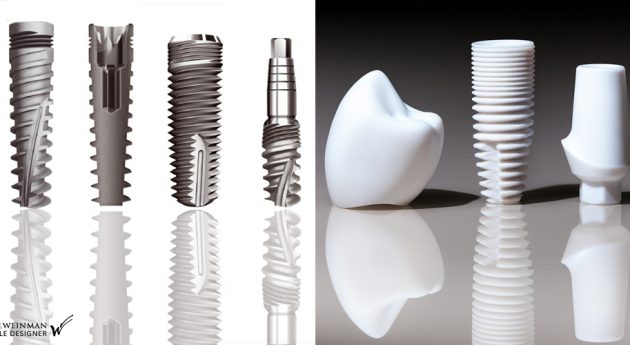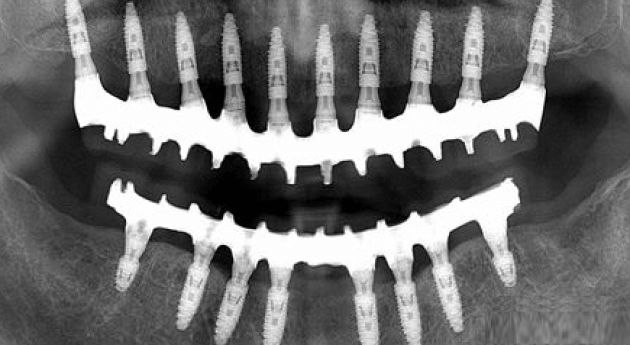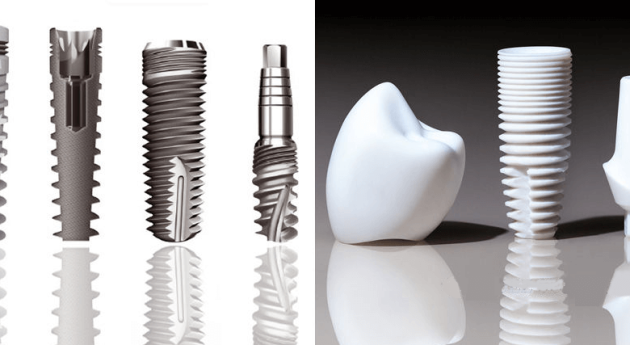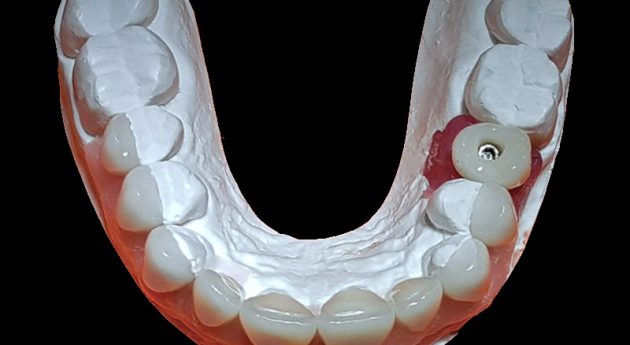DISCOVER THE MODERN WORLD OF IMPLANTOLOGY IN MCI
PLACEMENT OF DENTAL IMPLANTS WITH IMMEDIATE LOADING
REJUVENATE: YOUR SMILE IN LESS THAN A WEEK UNDER SEDATION
The paradigms of implantology in mci
reconciled with those of
conventional implantology
OUR CHOICE OF NEW PRINCIPLES IN MCI IMPLANTOLOGY
OUR CHOICE OF NEW RULES AND THE INTEREST FOR THE PATIENT
CHOOSE YOUR NEW SMILE ACCORDING TO YOUR AESTHETIC REQUIREMENTS
THE RESILIENT BRIDGE IN MCI: THE INDEED AESTHETIC STEP FOR IMPLANT OSTÉO-INTEGRATION
THE REHABILITATION OF YOUR SMILE
replace all your teeth at the bottom jaw
THE MANDIBULAR DENTAL IMPLANTS PLACEMENT PROTOCOL
in immediate load
REHABILITATION OF YOUR SMILE
REPLACE ALL YOUR TEETH IN THE UPPER JAW
THE PROTOCOL FOR THE INSTALLATION OF MAXILLARY DENTAL IMPLANTS
in immediate load
FOR STOMATOPHOBIA OR NAUSEA
ONE SHOT SEDATION MANAGEMENT
OUR "ZERO FEAR ZERO PAIN" DENTAL CARE FORMULA
YOUR COMPACTED CARE UNDER GENERAL ANESTHESIA IN A CLINIC
"NO PROBLEM CAN BE SOLVED WITHOUT CHANGING THE LEVEL OF CONSCIOUSNESS THAT CAUSED IT
ALBERT EINSTEIN
The paradigms of implantology in immediate loading
to those of conventional implantology
WHAT ARE THE PRINCIPLES OF CONVENTIONAL IMPLANTOLOGY?
The main principle that has prevailed is: “During the bone healing period, it is recommended to avoid exerting stress (pressure) on the implants. In this classic concept, the implants remain embedded in the bone, waiting for their osseointegration for two to six months.
This technique is known as “nurse placement” of implants embedded in the bone.
This recommendation is supposed to guarantee optimal conditions for bone healing, which is called osseointegration.
But this is also the major drawback of this technique. Because the patient must wait one to two trimesters from the date of implant placement before loading them with implant-supported ceramic dental crowns.
Thus, in this conventional two-stage technique, the implant-supported prostheses are placed two to six months after the implants are placed. This is the shortest timing, if the implant placement AND the bone grafting were done at the same time.
The timing of the scarring is further complicated when the extraction of teeth is quickly followed by a bone graft:
The latter requires two to six months of healing to accommodate implants. Consequently, this healing time is doubled or tripled if the bone grafting was done before the implants were placed. Because you have to add three to four months of bone healing (like the healing of a long bone in a broken leg).
This long waiting period is very badly accepted by patients.
In particular, when they are not already completely or almost completely edentulous. The psychological drama is obvious when their teeth have been extracted in the recent past to be replaced by implants. The corollary result is a discomfort of mastication and/or aesthetics which can go as far as a certain desocialization. This new handicap is extremely difficult to live with, as it is mortifying for the patient’s mental state, as well as for his social and professional life, and also for his love life.
To compensate for the disadvantages of the de-socialization resulting from edentulism, various temporary solutions must be provided to the patients during the healing time of both the grafts and the implants.
A whole range of temporary solutions have been invented: such as complete or partial removable prostheses, resin bridges bonded to adjacent teeth (if any remain), temporary mini implants.
These solutions have the advantage of being relatively simple to implement and inexpensive.
However, we feel that they are not well received. Because the aesthetic result and the masticatory function is uncertain.
Not to mention the inconvenience of a cumbersome mobile prosthesis, often poorly supported and the multiplication of interventions in a time-consuming patient journey.
Moreover, patients who wish to integrate a total rehabilitation program of their mouth and smile with a “complete bridge on implants” must expect to bear a significant expense.
However, all these inconveniences run counter to the comfort aspirations of patients who invest in comfort and aesthetics. It turns out that these last points carry the hopes of the patients. They are the driving force behind their approach to avoid the nightmare of “dentures”.
Consequently, it is difficult to accept that comfort is absent, at least at the beginning, from the conventional protocol. Considering the high cost in relation to this discomfort, even relative, a very great melancholic disappointment sets in, a potential source of conflict with the practitioner.


WHAT ARE THE PRINCIPLES OF IMMEDIATE LOADING IMPLANTOLOGY THAT WE BELIEVE ARE THE SUCCESSOR TO THE PRINCIPLES OF CONVENTIONAL IMPLANTOLOGY?
The details of the complex multidisciplinary technique of immediate loading implantology will be developed in the chapters on ICM that follow, but we can already discuss the main principles.
The main principle is the following : the scientific odontological community seems to have realized that it is not the “stress on the implants” stricto sensu that generates a fibrous interposition between the implant and the bone tissue and thus the failure of the implant protocol. Rather, excessive micromovements at the interface between the bone and the implant would be responsible for the failure of osseointegration.
The biological principles that govern Immediate Implant Loading protocols are similar to those applied in orthopedic surgery for the management of bone grafts by osteosynthesis or the reduction of long limb fractures by immobilization pins.
The scientific community in dental implantology has integrated into its problematic the biological and mechanical principles that orthopedic surgeons apply in all their surgeries of immobilization of grafted or fractured bone pieces.
This is the principle of osteosynthesis: Anyone who has had a fractured and immobilized limb has not, for the most part, been forced into a strict absence of pressure on that limb. The bone pieces are immobilized with screws or pins and/or a plaster cast. A very light pressure is acceptable, but obviously shocks and vibrations are to be avoided.
It is the application of these principles of osteosynthesis that has guided the protocols for immediate loading of dental implants or MCI This is achieved by immobilizing the implants and protecting them against micro-movements with a clearance of more than 200 microns, and by strictly recommending that only a very slight pressure be maintained during mastication.
In the MCI protocol, which we have chosen as the most suitable to solve our problems, the immediate implant-supported prosthesis is the MCI Resilient Bridge.
The MCI Resilient Bridge is made of a cosmetic material that is both impact resistant and aesthetically pleasing: acrylic glass or PMMA.
On the other hand, this resilient cosmetic material is attached to a very rigid and light metal framework, usually titanium.
These two biomaterials are shaped very precisely using modern CAD/CAM technology to ensure the highest possible passivity on the implants.
These manufacturing rules make it possible to place implants with immediate loading by an implant-supported dental prosthesis called “resilient”.
We will see the details of our protocol later.
AFTER ANALYZING THE PROTOCOLS FOR PLACING IMPLANTS IN IMMEDIATE LOADING, WE DECIDED ON THE ONE THAT SEEMED TO BE THE MOST SUITABLE FOR OUR CLINICAL RESULT OBJECTIVES
The application dprinciples of orthopedic surgery to the protocol for the placement of dental implants in immediate loading has led to several new proposals for implant immobilization and protection against micromovements.
1. At the time of placement, all implants must be locked into native bone (i.e., original, non-grafted bone):
This immobilization of the implant screws in the native bone is called “primary fixation”, for a minimum torque (torsional force) of 35 Newton at placement.
2. All contiguous implants must be joined by a rigid, passive metal frame passive metal framework:
This bonding of the implants to each other will limit micromovements at the interface between bone and implant to less than 200 microns. This limitation of implant travel in the native bone corresponds to the principles of bone immobilization during a fracture with osteosynthesis screws or pins. This immobilization of the bone parts or titanium metal parts (implants) in the bone parts (alveolar bone), will allow a bone “welding” of the implants in the native bone which is called osseointegration.
Micro-movements are fatal for the osseointegration of implants. On the other hand, a metal frame that immobilizes the implants will optimize their healing in the bone. It is the skeleton (framework) of the implant-supported bridge installed immediately or a few days after the placement of the implants that provides this rigid support.
3. Bone grafts are performed either with allogeneic bone grafts (i.e. of human origin) or with xenogeneic bone grafts (i.e. of animal origin) or a mixture of both:
After a dental extraction, there is systematically an osteolysis. That is, the triggering of alveolar bone resorption. It is a physiological phenomenon. However, a loss of bone volume around the implants systematically leads to the loss of the implants.
It is therefore essential to block bone resorption by means of bone grafts around the implants and all around the jawbone operated on at the time of the extractions.
In our ICM protocol, we have chosen not to use any other biomaterials than allogeneic (i.e., human origin) and/or xenogeneic (i.e., animal origin) bone grafts.
In our choice of protocols, we arbitrated for all those involving regenerative dentistry. However, these bone biomaterials have the property of being easily enriched with autologous tissue growth factors (PRF or PRP) from the operated patient. These growth factors are found in his blood platelets. They are recovered by centrifugation of the patient’s blood and collected through a simple blood test during the procedure.
4. We systematically collect blood from the patient and centrifuge the recovered blood pellets in order to make PRF platelet concentrates in liquid (iPRF) or membrane form (aPRF). The PRFs, containing tissue growth factors in supra physiological concentration, are placed in the surgical site during the operation.
This is a platelet autograft. It seems to us to be a determining factor in the healing process. In fact, it provides both immune and scar cells.
FRP appears to provide an immune and wound healing jump of almost a week compared to the natural wound healing process.
It is therefore an optimization of the osseointegration of the implants in the native bone, of the healing of the additional bone grafts and of the healing of the soft tissues that will remodel around the implant-borne prosthesis in immediate loading.
WHAT IS THE BENEFIT OF PLACING MCI IMPLANTS FOR THE PATIENT?
The advantage of immediate loading for the patient is obvious : he or she receives an implant-supported prosthesis within a few days after the procedure instead of the four to ten months traditionally required.
He is therefore very quickly and completely resocialized.
The various surgical steps, such as dental extractions, dental implant placement, post-extraction bone grafting and PRF placement, are all compacted into a single “one-shot” ICM implant placement procedure in the operating room under general anesthesia. The optimization of healing and immunity through regenerative dentistry makes the postoperative period extremely light, if not almost non-existent.
The functional and esthetic quality of the implant-supported resilient bridge is such that it can be considered a good quality semi-permanent prosthesis.
The result of this “good quality” is that the patient benefits from a treatment that almost immediately restores most of his aesthetic and functional needs in less than a week.
There are many reasons for total or partial edentulism:
It can be a generalized aging of the teeth, a periodontal disease that has reached a near terminal stage (loosening of the teeth), or an accident with a frontal impact.
In all cases, the distress is twofold:
On the one hand, the physical distress induced by the physiological handicap caused by the loss of all or part of the dental organs in a brutal or unavoidable programmed way.
And on the other hand, the psychological distress of being physically diminished.
These two factors can lead to partial or total desocialization of the person.
This physical and psychological distress is increased when the collateral damage becomes professional and/or romantic. In any case, the consequences are dramatic for the patient, who sees his or her future in the short term tipped over into the nightmare of physical disability.
The ICM protocol generally allows us to solve all of these problems in a single intervention.
At Smile Designer, our “Team MCI” is a team dedicated to implantology procedures.
She is particularly trained to solve the difficulties that complex clinical cases may present.


WHAT IS THE INTEREST OF THE PLACEMENT OF MCI IMPLANTS FOR THE DENTAL IMPLANTOLOGIST?
The interest for the surgeon is to treat his patient with a global solution in MCI which solves most of the drawbacks of all the protocols previously implemented.
First, the dentist does not have to deal with the patient’s discomfort and all the grievances that go with it. Especially since these grievances are usually justified and unfortunately only have alternatives. In all classical protocols, the patients’ complaints are discomfort due to the instability of the provisional prosthesis, a generally disappointing aesthetic and an uncertain masticatory function.
The surgeon finds in the MCI protocol solutions to the inconsistencies of conventional protocols:
Indeed, based on the general principle of osteosynthesis that a bone cannot heal if it is mobilized, then what is the sense of “shaking” the post-extraction bone graft with a mobile dental appliance during mastication?
For the same reasons, what is the sense of mobilizing the implants during mastication and the 2000 daily swallows?
Finally, what is the sense of compressing soft tissue with this same removable device, which will create ischemia, just as a tourniquet would? That is to say, a lack of vascularization, while the blood supply is fundamental for healing!
However, all these paradoxes are present in the classical protocols. They seemed instinctively “meaningless” to most implant specialists. However, scientific advances tend to show thatthe MCI protocol erases these inconsistencies .
In addition, immediate loading reduces the number of sessions and postoperative follow-up. The total processing time is drastically reduced and the practice time management is optimized.
The surgeon can also expect aesthetic results that are far from the traditional protocols since plastic remodeling of the interdental papillae is now possible with the MCI protocol:
In post-extraction, immediate placement of an implant in an extraction site, combined with a bone graft, prevents resorption of the native bone. This optimizes the bone capital of the area.
But also and above all, to optimize the thickness of the gum around the implants. The cellular regeneration of hard tissue (bone) and soft tissue (gum) is synergistic. The consequence of placing the implants, the bone graft and the growth factors contained in the PRFs in the same operation time, allows to recreate a synergic cellular environment favorable to the reconstruction of the gum and the interdental papillae around the prosthetic teeth, with the same visual as around the natural teeth.
The biggest challenge for the dentist : It is to find surgical structures and dental laboratories specialized in implantology with immediate loading, which can give him training and technical support, with long experience, to manage particularly complex and difficult cases.
At Smile Designer, ourur “Team MCI” takes care of the whole surgical part.
A dental doctor who would be a correspondent of our company could take charge of the second set of MCI prosthesis, once the first prosthesis in immediate loading is completely osseointegrated.
WHAT ARE OUR KEYS TO A SUCCESS EXPECTATION
IN OUR MCI? IMPLANT PLACEMENT PROTOCOL
Clinical success in implantology in general and in the implementation of an immediate loading implant protocol in particular, is the osseointegration of the implants, without bone loss around them. In some cases, there is even a gain in bone volume following implant placement.
The osseointegration of implants, or more simply said the bone healing around the implant screw turns, depends on the management of many parameters that are all rethought and optimized in the modern protocols of implantology in Aesthetic and Immediate Loading.
We now know that in order to optimize osseointegration, it is necessary to limit the micro-movements of the implants: The main objective is therefore to minimize micromovements at the interface between the bone and the implant. To achieve this result, the mechanical stresses on the implant must be fully controlled, as must the primary stability of the implants, which must be optimized.
To limit the micro-movements of the implants, there are two important parameters that the implantologist must control perfectly:
On the one hand, the primary fixation of the implant, at the time of its placement, must be at least equal to 35 newtons.
On the other hand, the forces exerted at the bone-implant interface must be gentle and harmoniously distributed.
We have arbitrated different techniques that allow to hope for an optimal clinical result.
THE PLACEMENT OF THE IMPLANTS IS TECHNICALLY DEPENDENT:
THE CHOICE OF THE RIGHT INDUSTRIAL IMPLANT TECHNOLOGY TO OPTIMIZE PRIMARY FIXATION AND OSSEOINTEGRATION
L
he proper primary fixation of the implant, when screwed into the bone, depends primarily on its
he industrial design
The first way to limit implant micromovements is to fix the implants in the bone with strong anchorage of the implant screw turns.
This is why the various manufacturers of implants have particularly focused on the problem of immediate loading of implants. They have designed and manufactured implants with a particular profile of the implant screw turns whose aggressiveness is studied for, on the one hand, a better primary stabilization and, on the other hand, not to create a compression in the fragile areas of the bone, in particular in the poorly vascularized area of the cortical bone.
These two objectives seem to be in opposition and constitute a dilemma:
Indeed, how to satisfy the requirement for aggressive coils to better anchor the implant in the bone and at the same time, not generate mechanical constraints on the bone tissue, at the risk of creating ischemia?
The latter are fatal for the vascularization and therefore for the osteointegration. It is thus, a whole science and a technological know-how which leaned on this dilemma. New generation implants have been developed. They are produced by the various micromechanical industries that have solved this problem.
The implants used in our MCI protocols are implants with a very specific profile. Not all implant brands have designed implant screw models that can be used in MCI.
At Smile Designer, we have selected the specific implant systems for the Immediate Load protocol from a selection of international brands.

IMPLANT PLACEMENT IS TECHNICALLY DEPENDENT: OUR SELECTION OF SURGICAL IMPLANT TECHNIQUES TO OPTIMIZE PRIMARY FIXATION AND OSSEOINTEGRATION
Our implantologists, members of the “MCI team”, have selected per operative implant rules, adapted to our expectations of results
L
he correct primary fixation of the implant, when screwed into the bone, depends on the respect of the surgical techniques of implant placement
The placement of implants is technically dependent: the dentists who practice this discipline have specific training, in particular for the protocol of implant placement in immediate loading. Precise surgical rules are established and updated in order to comply with the biological principles governing bone healing around implants, which is called osseointegration.
The main guidelines for surgical procedures at the time of ICM implant placement are as follows:
Note, however, that they are never permanently consensual. Indeed, they are regularly updated according to scientific and surgical advances during recurrent international communications.
- The first important rule is that the available bone height must be preserved and any bone loss, especially vertical bone loss, must be avoided in order not to lose valuable implant height. We have chosen this concept which replaces the previous recommendation to flatten the available alveolar ridges and thus reduce them. Bone grafting techniques enriched with growth factors (PRF) make it possible to reconstruct bone volumes around implants even if the external parts of the implants are denuded, following bone losses related to the extraction of natural teeth.
- The second rule is that pressure should not be exerted on the available implantable bone when the implants are screwed in, especially if the bone is dense, as this generates ischemia that is fatal to the bone microvascularization. Bone resorption is generally observed when this principle is not respected.
- The third rule is to place the implants in a retro palatal and lingual position in order to benefit from two advantages: On the one hand, to have a support on the native and dense cortical bone which ensures primary stability, even if the extractions have created important vestibular, distal and mesial bone voids. These will be filled with bone grafts enriched with PRF-type platelet concentrates. On the other hand, this retroposition of the implants allows them to be perfectly included in the prosthetic dental arch of the future implant-supported bridge, without parallax and interference with the vestibular faces of the prosthetic teeth.
- The fourth rule is that the axis of the implants should be as natural as possible, i.e. in the direction of the occlusal vectors and not with parallaxes that increase the risk of creating shearing forces that are fatal to both the prosthesis and the recipient bone.
- The fifth rule is that the level of burial of the implants respects the general anatomy of the dental arches, which the profile of the prosthetic teeth will have to reproduce. This means that the anatomy and aesthetics of the natural dentition must be respected, with an anatomical distribution of the implants similar to that of the natural teeth in the three dimensions of space. The depth of burial must correspond to the emergences of the necks of the natural teeth, which differ depending on whether it is an incisor or a canine, for example.
- The sixth rule is that the implants must be placed in a subcrestal position in order to avoid any risk of bone compression of the alveolar ridge cortex and thus a vascular strangulation creating a mortifying ischemia for the peri-implant bone which will tend to resorb.
- The seventh rule is that the smallest possible implant size should be used so as not to mutilate the bone vascularization necessary for healing. See the previous rule.
- The eighth rule is that a sufficient number of implants must be placed to distribute the occlusal loads of mastication, especially in the sagittal-medial symmetrical axis, but also in the anteroposterior direction, with a spacing of the implants that corresponds to that of the natural teeth.
At Smile Designer, we have selected our implant dentists based on their general training in oral surgery and their specific specific training for the Immediate Loading protocol.
The corollary of these new implant profiles with their increased surface area is that short and/or narrow implants with highly optimized coil profiles are now used as successfully as long and/or wide implants. This aspect of the problem is extremely important since it limits the need to perform large-scale bone grafts and in particular sinus lifts, the operative risks of which are significant.
Implants with a narrow diameter are preferred in order to avoid maximum damage to the vascularization of the alveolar bone receiving the implants. Indeed, the larger the diameter of the implant, the greater the bone injury. The greater the vascular damage, the more this destruction of blood vessels creates local ischemia, which is partly responsible for the bone resorption around the implants.
The operator must have extensive surgical experience to appreciate the bone density and maintain the implant axis determined for each implant.
Choosing the axis of the implants is not a difficult task: this gesture is so delicate and difficult that there are many aids to surgical planning, such as surgical guides made in digital 3D or dedicated 3D robotics to help with surgical navigation.
However, the surgeon remains very much alone at the time of the operation: we do not operate on a scanner but on a person. While an implant simulation can be repeated indefinitely on a computer, during the actual procedure things are different and the error is irreversible.
All implants must be placed in close contact with the cortical wall, palatal in the upper jaw and lingual in the lower jaw (also called mandible). This retroposition of the implants in relation to the alveolar ridge is essential for :
– On the one hand, having a primary fixation in dense native bone;
– On the other hand, to allow the perfect positioning of the implants in the prosthetic corridor, i.e. within the horseshoe arch of the dental arch.
In order to achieve successful implant surgery, the implants must be parallel to each other to avoid parallaxes that generate shearing forces on the metal of the implants, the connectors and the supra-implant prosthesis as well as on the bone structures.
Implants should be parallel but not in any axis. They must all be in the axis that corresponds to the occlusal vector of mastication. Mother nature made our natural teeth in an axis, we must respect it. The mechanical principle is obvious: anyone who has tried to drive a nail into a wooden board knows that if he puts it in the wrong way, either the nail will bend or the wooden board will split at the first blow of the hammer…
This is why the surgeon uses a certain number of anatomical landmarks such as the retro incisal hole of the maxilla in order to locate the anatomical reference vector of the patient’s dentition. This anatomical axis, which is specific to each person, will allow the positioning of the implants’ axis to be identical to that of the natural teeth of the operated patient.
The same respect for the patient’s anatomy governs the choice of the depth of burial of the implants. The depth of bone at which the implants are placed must correspond to the natural anatomy of the teeth, respecting the horizontal lines and the different root levels that will determine the final aesthetics of the prosthesis on implants.
The patient’s bone is more or less dense: There are four levels of bone density from D1 to D4. D4 is extremely soft and this will be a very big challenge to fix the implants for an ICM.
We prefer to place placement of the implants in a retro palatal and lingual position in order to benefit from cortical support.
We prefer a subcrestal implant placement to minimize pressure on the alveolar bone and limit vascular strangulation.
We prefer a spacing between the implants that corresponds to that of the natural teeth in order to optimize the aesthetics of the emergence of the prosthetic teeth and to promote the creation of new inter-dental papillae.
There is no universally recycled rule for determining the number of implants to place.
The choice of the quantity of implant abutments depends on the volume of bone available, but also on the morphotype of the patient and his or her size, as well as on his or her occlusal function and jaw type.
As a general rule, anterior implants should be spaced as far apart as possible in order to restore the aesthetics of the anterior gingival tissues and to give preference to molar supports. This is the principle of our “Gold Standard MCI” protocol.
However, some clinical cases do not necessarily allow this type of implant architecture.
A biological assessment of the patient is essential: an unstructured assessment balance sheet does not allow the placement of implants:
That is to say, a biological check-up must be systematically performed, well before the surgery, in order to verify that there is no deficiency, especially in vitamin D. But also, the biological parameters such as cholesterol and blood sugar must be perfectly normal.
If there are metabolic parameters that are abnormal, then the anesthesiologist, in cooperation with the attending physician, must absolutely restore the patient to health, especially in the case of diabetes.
Smoking is incompatible with a good biology of the patient : they must stop smoking and undergo a health check-up. Because nicotine blocks part of the salivary secretions, in particular the nicotinic receptors of the parotid gland.
Also, cigarette smoke creates a very important oxidative stress and an accelerated ageing of tissues.
Finally, the tars contained in cigarettes clog the large arteries, but even more quickly the small arterioles, totally necessary for the vascularization of the scar tissue at the time of the placement of the implants.
Everyone will have understood that there is no sense in trying to regenerate tissues on the one hand with regenerative dentistry and on the other hand to age them prematurely with tobacco!
At Smile Designer, in order to help patients who wish to be eligible for the MCI protocol, but who have difficulty quitting smoking, we have, with our anesthesiologists, developed an intravenous hypnosis protocol, combined with a drug treatment. The vast majority of smokers stop smoking.
TO OPTIMIZE OSSEOINTEGRATION: WHAT IS OUR CHOICE OF TECHNIQUES THAT MINIMIZE THE FORCES EXERTED AT THE BONE-IMPLANT INTERFACE

OUR SOLUTION CHOICES FOR LIMITING IMPLANT MOVEMENTS AND PRESSURE FROM THE MASTING FORCES ON THE IMMEDIATELY LOADED IMPLANT-BORNE PROSTHESIS
Everyone remembers the physics formula that says that pressure is equal to the force (in this case chewing force) exerted on the surface (in this case the surface of the implants).
You can experience this universal physics formula every day when you go to your favorite supermarket with a bag of groceries. In this case, the weight of the bag is divided by two for each member of the couple. This will have the advantage that your fingers will be much less sheared by the handles of the bag.
This is exactly the same principle that applies to implants: the more the surgeon increases the number of implants, the more he decreases the stresses on each of the implants.
This is why the ALL ON 4 and ALL ON 6 techniques are only used in our protocols for small bodies and/or elderly people.
We prefer to put more implants in order to avoid stresses on each of the implants.
These mechanical pressures will, on the one hand, act on the implants themselves. This means that the risk of implant fracture is increased. But also, these pressures will act on the surrounding bone tissue around the implant with the creation of an abnormal mechanical stress on the tissue which will only be resorbed in time.
In our MCI protocols, when the clinical case allows it, the minimum number of implants is six in the mandible and eight in the maxilla:
We always try to place a large number of implants, especially in the posterior molar areas. The specific difficulties of the posterior sectors of the maxilla are developed in the chapters below.
It is not enough to place a large number of implants, but the implants must also be distributed over the arch in such a way that each implant is loaded harmoniously in the process of dispersion of the masticatory forces, the so-called occlusal forces. That is, the forces of chewing but also the forces of swallowing 2000 times a day.
Everyone has understood that if we want to make a barrier to prevent our favorite animals from escaping, it is necessary to plant stakes, but it is preferable to connect them all together with a cross beam, so that the forces exerted on each stake are distributed, thanks to this cross beam, on all the other stakes. Whereas if we have individualized posts, a force exerted on a single post remains concentrated on it, until the breaking point.
In this case, it’s easy to “pull the daisy” and knock down each stake. And this is happening faster and faster, as the number of posts decreases.
It is exactly this principle of general mechanics that we are going to apply to the implants by connecting them all together by a metallic framework. This rigid fixation of the implants will have a double effect: on the one hand, it will reduce the stresses at the bone interface of each of the implants by dispersing the forces and, on the other hand, it will neutralize the rotational forces of the implants and the prostheses on the implants.
Everyone has understood that when you have good Pataugas soles, you can go far in the mountains and that conversely, going hiking with flip-flops is likely to end in drama.
It is exactly these common sense principles that apply in our protocol: the immediate loading prosthesis must (like a good walking shoe) be sufficiently rigid not to deform during function (mastication) but also to absorb shocks during its operation.
Here again, we can consider ourselves in a dilemma, since these two qualities of our immediate loading prosthesis seem to be opposed! How to be both rigid and flexible?
Rest assured this dilemma has been solved thanks to high-tech materials such as PMMA which combines impact resilience, pressure resistance and even aesthetics.
The qualities of the“PMMA acrylic resin resilient bridge” will be developed at length in the following chapters.
FOR OSTÉO-INTEGRATION TO HAVE A FUTURE IT SEEMS IMPERATIVE TO PLACE THE IMPLANTS IN THE PATIENT'S SPECIFIC ANATOMIC AXES
To regain the aesthetics of the smile, the respect of the rules of good sense is to follow what
the harmony of
nature has created:
Implants replace natural teeth. The implants are simply placed in the place of the teeth and obviously in the ideal position in which they are expected to be. Off-center implant positions do not correspond to this principle. It is important that the implants are in the ideal anatomical axis of the teeth.
In addition, the distribution of the implants must be symmetrical in the sagittal medial plane with similar burial of the implants on both sides of this medial plane. These are the sine qua non conditions to hope to rebuild the harmony and aesthetics of the smile.
Finally, of course, the implants must be placed in the “prosthetic corridor” so that their emergence is not in the middle of a tooth or obliges the prosthetist to create dental malpositions that would be treated by an orthodontist in a situation of natural teeth…!

the extraction protocol of natural teeth and their immediate replacement by dental implants: OUR CHOICE OF PROTOCOL IN ADEQUACY WITH THE "one shot" surgical concept
In our protocol for placing dental implants in MCI, we systematically favor the extraction-immediate implantation technique when the clinical case allows it.
That is, we place the implants in the post-extraction sites, at the time of extraction, during the same procedure.
However, in some clinical cases, extractions may have been performed in the past and the extraction sites may have been filled with scar bone for a long time.
The placement of the implants will therefore depend on the morphology of the hard tissues as well as the soft tissues and their biological and therefore healing quality as receptors for the implants.
The aesthetic requirements will guide the surgeon in his protocol because some teeth are strategically very demanding in terms of aesthetics. On the other hand, others, particularly in the posterior sectors, have fewer aesthetic constraints.
Conversely, the mechanical requirements for the replacement of posterior teeth are greater than the requirements on anterior teeth, which bear less pressure.
We specify in “our choice of MCI protocol”: since in other protocols such as “ALL ON 4 and ALL ON 6”, the occlusal forces are concentrated on the anterior sectors, which, in our opinion, makes the concept of these protocols less effective in terms of anti-fragility, quality of masticatory force and also hope for recovery of aesthetics.
Biological compliance or how to meet the principles of biological space conservation:
When placing implants, the technique must take into account the preservation of the “biological space” : that is, all the tissues above the emergence profile of the implant that will constitute the biological joint between the external and internal worlds of the body.
The biological space is constituted by the gingival sulcus, the epithelial attachment and the connective attachment. It is the border between the internal and external world of our body since a tooth is a bone that, in a way, crosses our “skin-gum”.
Dental implants organize tissues similar to those of the natural tooth. An implant that is placed without respecting this biological space will automatically generate biological and bacterial disturbances in this neoformed space. This will result in bone resorption or osteolysis.
It also goes without saying that the implants should not be glued together so that the tissue can heal. There is therefore a minimum inter-implant distance of about 7 mm from the center for implants with a diameter of 3 to 4 mm.
This is why small diameter implants of 3 to 4 mm in diameter are preferred in our protocol over large diameter implants.
All the more so since the “large diameters” do not provide more primary fixation than the “small diameters” of the new generation with increased surface.



